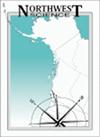俄勒冈州东部一条小山溪的被动修复
IF 0.5
4区 环境科学与生态学
Q4 ECOLOGY
引用次数: 0
摘要
摘要在这项研究中,我记录了俄勒冈州东北部一条小山溪11年的被动修复结果。消除了该系统的主要压力源,即放牧和农业实践,使中部三分之二河段的河岸植被得到了有力的恢复。从2007年到2018年,树木和灌木的覆盖率增加了两倍,树木密度增加了七倍,溪流遮荫增加了四倍。日平均最高气温下降了2.1至2.8°C,日平均最高温度范围缩小了3.7至4.6°C。美洲海狸(加拿大海狸)的重新定居在改善18%以上河段河床状况方面发挥了重要作用。他们的水坝和池塘启动了河床沉积过程,并将河狸复合体内的单线切割河道转变为多线结构。蓄水区的植被扩张比未蓄水区的要强烈得多。被动修复在两个部分无效,这两个部分共占三分之一的河段。在溪流的上部,由于夏末和秋季持续(未经授权)非法放牧,恢复工作停滞不前。河道化的下游河道改造过严重,无法进行可测量的回收。我得出的结论是,11年的被动恢复将溪流的功能从24%提高到了32%,在海狸复合体中,其功能提高到了扰动前的57%。本文章由计算机程序翻译,如有差异,请以英文原文为准。
Passive Restoration of a Small Mountain Stream in Eastern Oregon
Abstract In this study, I documented the results of 11 years of passive restoration of a small mountain stream in northeastern Oregon. Removal of the main stressors on the system, grazing and agricultural practices, resulted in a strong recovery of the riparian vegetation over the middle two-thirds of the reach. Cover of trees and shrubs tripled, tree density increased sevenfold, and stream shading fourfold over the period 2007 through 2018. Average maximum daily stream temperature declined by 2.1 to 2.8 °C, and average maximum diurnal temperature range narrowed by 3.7 to 4.6 °C. Recolonizing American beavers (Castor canadensis) played an essential role in improving the condition of the streambed over 18% of the reach. Their dams and ponds initiated the process of streambed aggradation and transformed the single-thread, incised channel into a multi-thread configuration within beaver complexes. Vegetation expansion was much stronger in impounded than in un-impounded parts of the stream. Passive restoration was not effective in two sections, together comprising one-third of the reach. In the upper part of the stream, recovery stalled because of continued (unauthorized) trespass grazing during late summer and fall. The channelized lower section of the stream was too severely modified for measurable recovery to occur. I concluded that 11 years of passive restoration improved the functionality of the stream from 24% to 32%, and within beaver complexes, up to 57% of its pre-disturbance condition.
求助全文
通过发布文献求助,成功后即可免费获取论文全文。
去求助
来源期刊

Northwest Science
环境科学-生态学
CiteScore
1.30
自引率
0.00%
发文量
23
审稿时长
>36 weeks
期刊介绍:
The pages of Northwest Science are open to original and fundamental research in the basic, applied, and social sciences. All submissions are refereed by at least two qualified peer reviewers. Papers are welcome from authors outside of the Pacific Northwest if the topic is suitable to our regional audience.
 求助内容:
求助内容: 应助结果提醒方式:
应助结果提醒方式:


